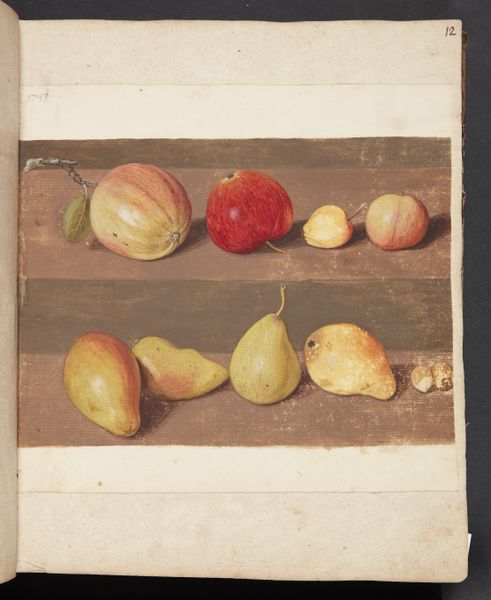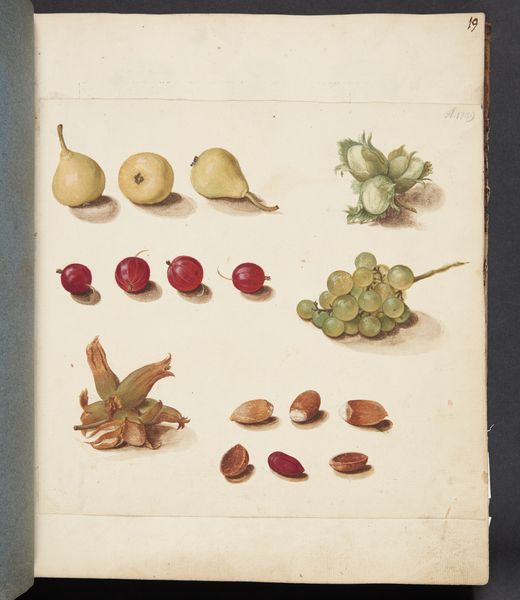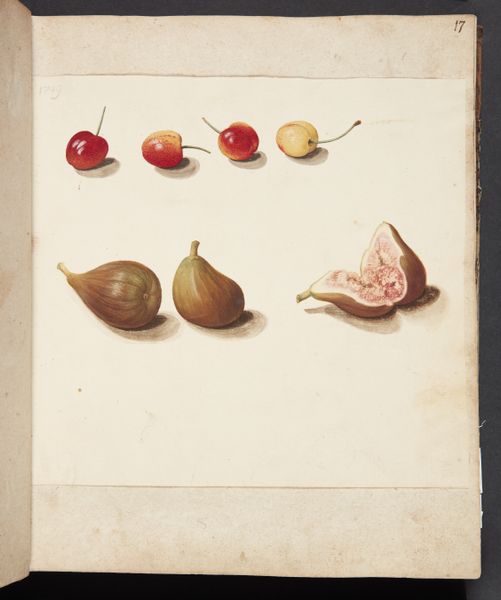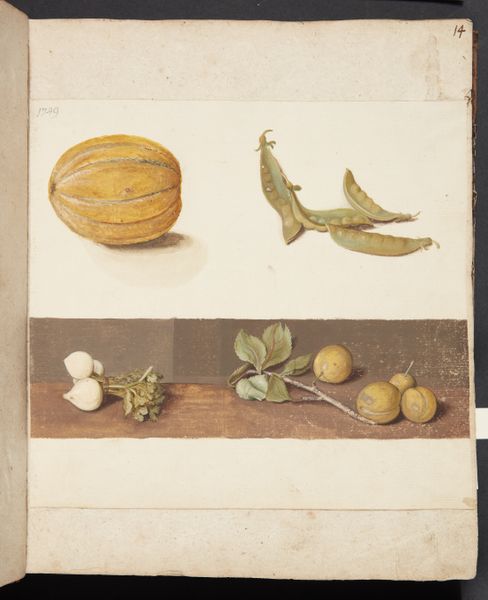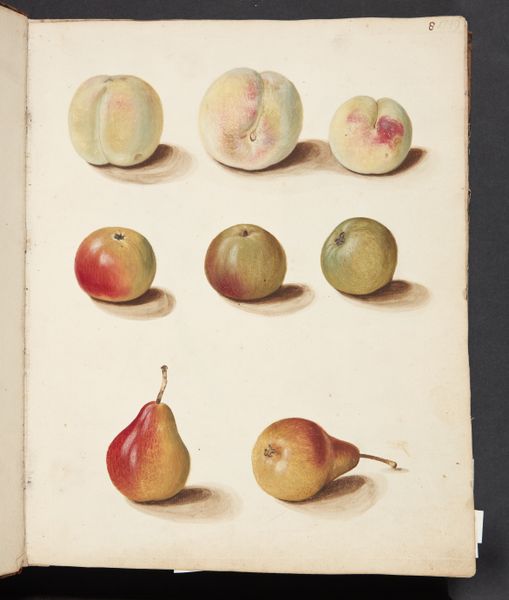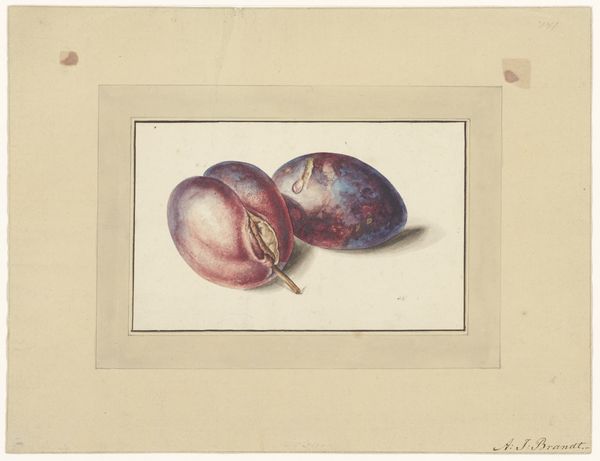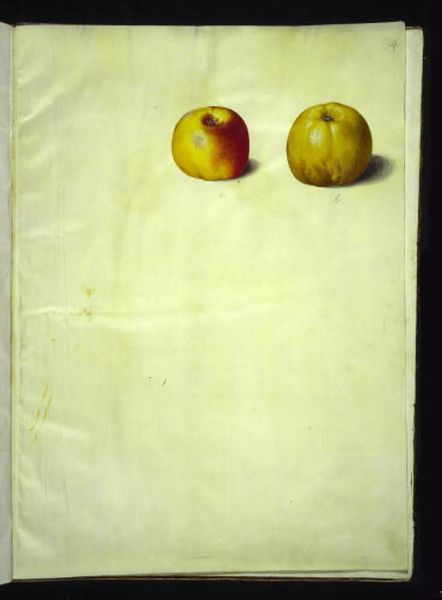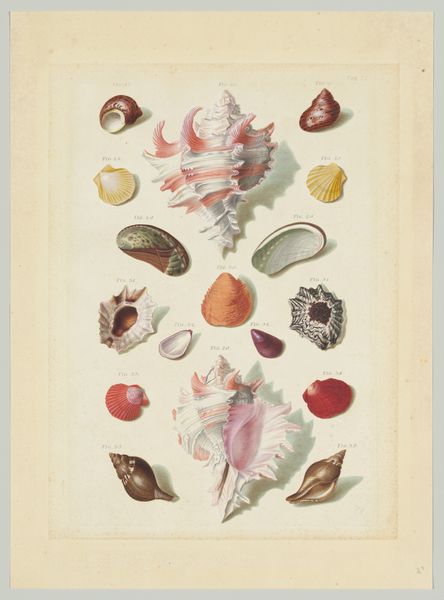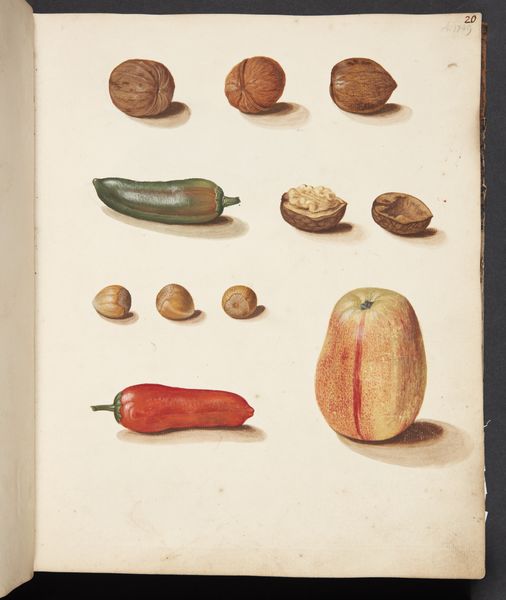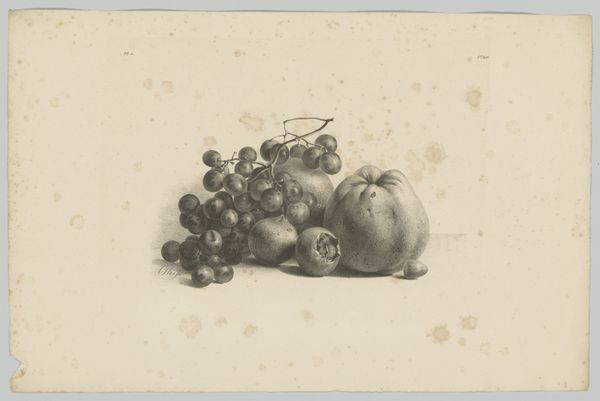
drawing, coloured-pencil, gouache, watercolor
#
drawing
#
coloured-pencil
#
water colours
#
pottery
#
gouache
#
watercolor
#
coloured pencil
#
academic-art
#
miniature
#
watercolor
Dimensions: 281 mm (height) x 227 mm (width) (bladmaal)
Editor: Here we have Johanna Fosie’s “Study of Fruits and Berries” from 1747, rendered with watercolor, gouache, and colored pencil. It's got this lovely, almost scientific illustration quality. What cultural ideas might be hiding in plain sight? Curator: Indeed, it’s quite beautiful, isn’t it? The rendering is very precise, and this is far from just a picture of fruit, or just a study of them either! Can you see how the presentation mirrors similar scientific and encyclopedic depictions from the era, influenced by Enlightenment ideals? Consider what values this communicates. Editor: The careful arrangement feels almost like an inventory… almost a claim of knowledge? Like categorizing the natural world! Curator: Precisely! There’s a subtle assertion of control. This need to categorize natural history, including fruits, suggests a particular mindset – one eager to contain and understand, bringing what is not yet known to the fore. Editor: And the way the fruit is depicted... almost idealized, especially with such vibrant colors. It evokes a sense of luxury and privilege to me. Was that intended for a specific audience, maybe with access to fruit unavailable for some at that time? Curator: Likely so! Beyond mere botany, these fruits signify prosperity, maybe the beginnings of globalization, or perhaps even hidden status. Fruit were a common motif – look for the psychological weight that might attach to specific varieties, such as apples, grapes, and stone fruits across Europe. Editor: Fascinating! I hadn’t thought about the underlying societal messages transmitted through such a seemingly simple study of fruit. Curator: Consider how these images also worked to construct cultural memories, and their continuous relevance in visual form to audiences for centuries to come. What starts out as observation then solidifies collective ways of remembering.
Comments
No comments
Be the first to comment and join the conversation on the ultimate creative platform.

